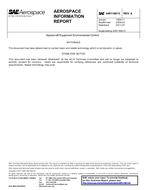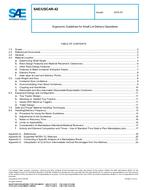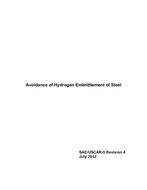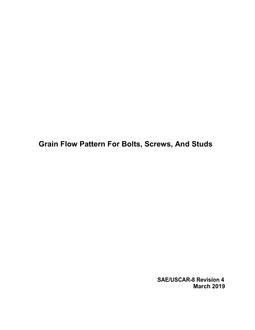SAE AIR1168/13A – Spacecraft Equipment Environmental Control (Stabilized: Jul 2011)
This part of the manual presents methods for arriving at a solution to the problem of spacecraft inflight equipment environmental control. The temperature aspect of this problem may be defined as the maintenance of a proper balance and integration of the following thermal loads: equipment-generated, personnel-generated, and transmission through external boundary.Achievement of such a thermal energy balance involves the investigation of three specific areas: 1. Establishment of design requirements; 2. Evaluation of properties of materials; and 3 development of analytical approach.The solution to the problem of vehicle and/or equipment pressurization, which is the second half of major environmental control functions, is also treated in this section. Pressurization in this case may be defined as the task associated with the storage and control of a pressurizing fluid, leakage control, and repressurization. Although secondary to the thermal energy balance, the function of pressure control is nevertheless an important aspect of the overall environmental problem.Environmental control systems (ECS) must operate in a continuously changing radiant thermal energy exchange condition with the Sun, Earth, and space, and with variable internal equipment loads. Frequently, during the operational phase, concentrated amounts of energy must be dissipated from small components with small external surfaces. The internally generated heat loads may be cyclic but also random with respect to the orbit.Some equipment such as actuators, attitude control devices, or storage tanks may be partially exposed and require special treatment. Other components will function properly only if pressurized, while in some instances pressurization is used as a means of eliminating the need for qualification in a hard vacuum. These installation techniques will introduce their own thermal control problems and contribute to the selection of a specific ECS configuration.
Product Details
- Published:
- 07/25/2011
- File Size:
- 1 file , 5.6 MB
- Note:
- This product is unavailable in Ukraine, Russia, Belarus





